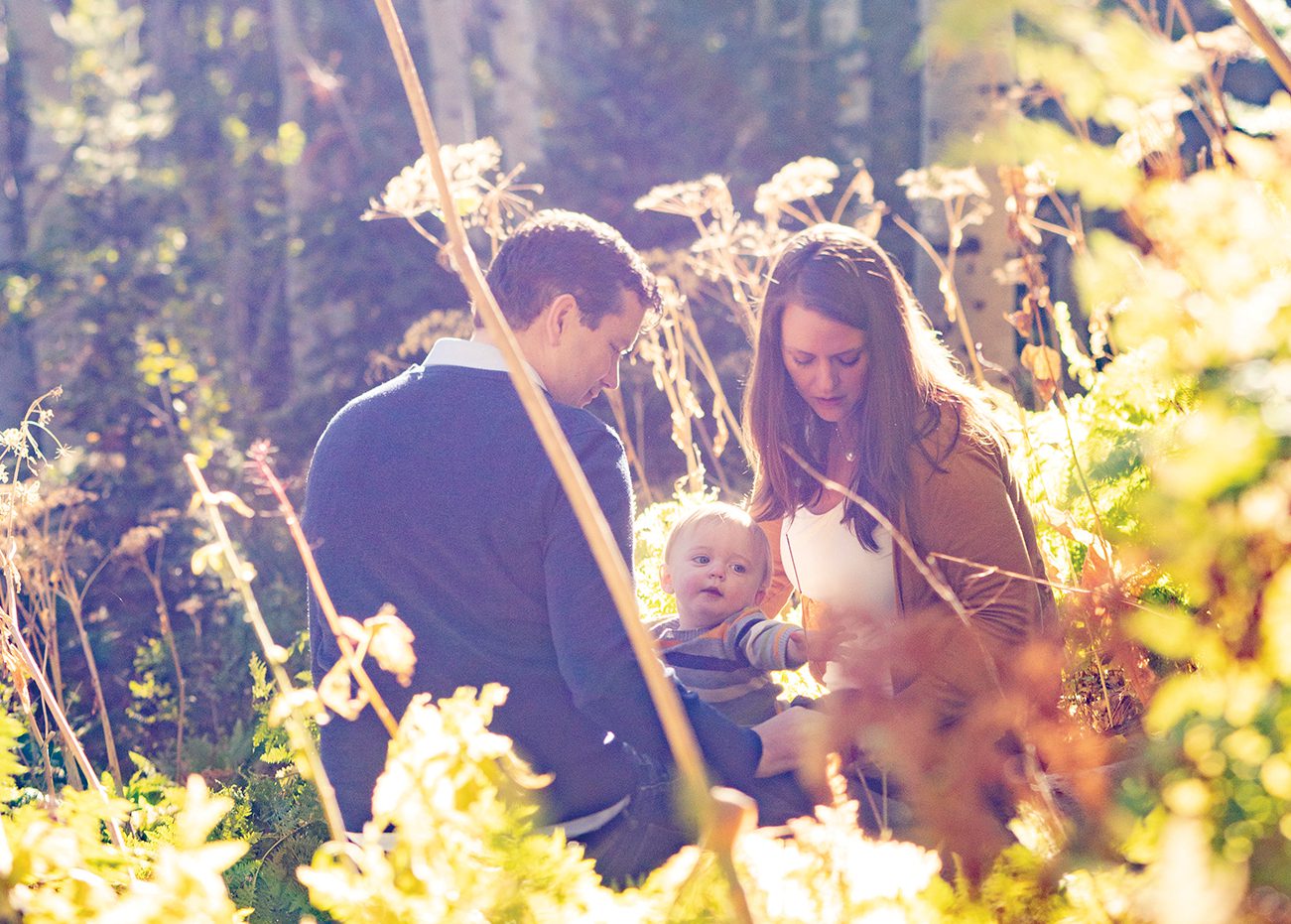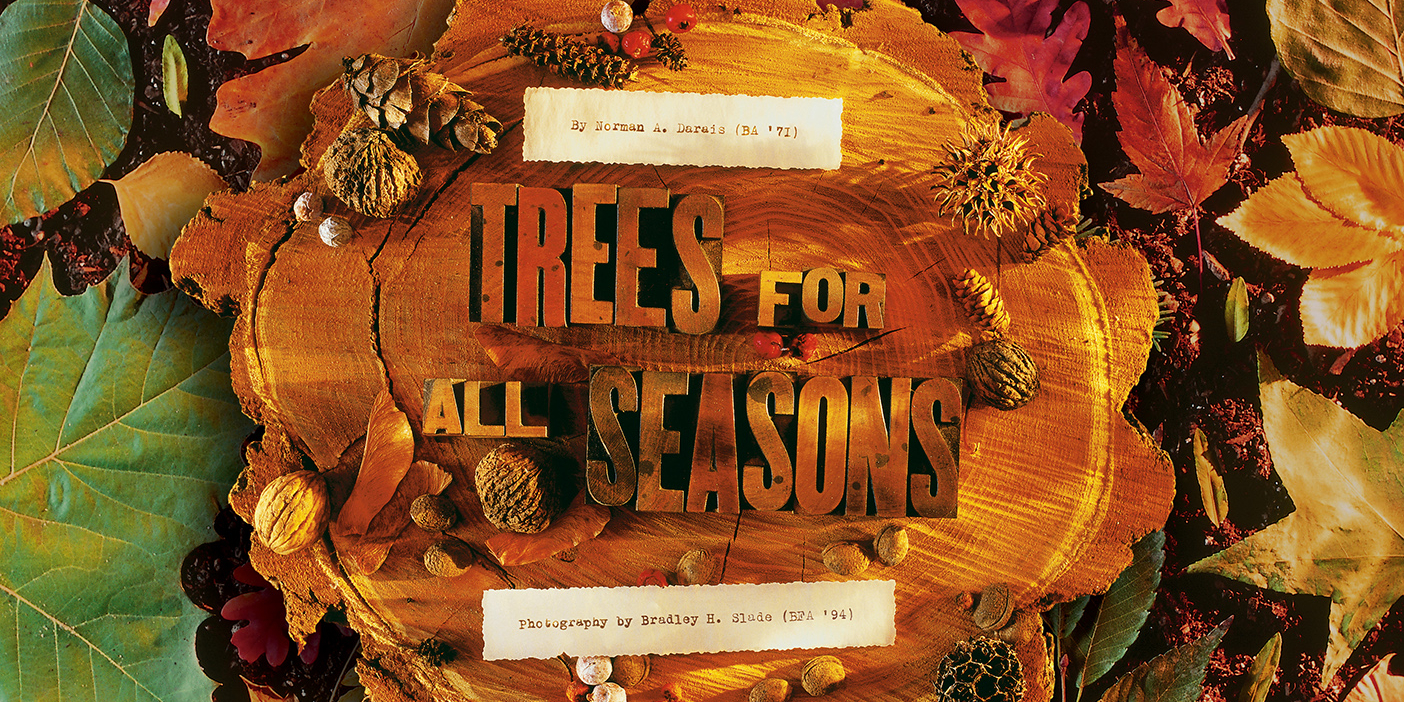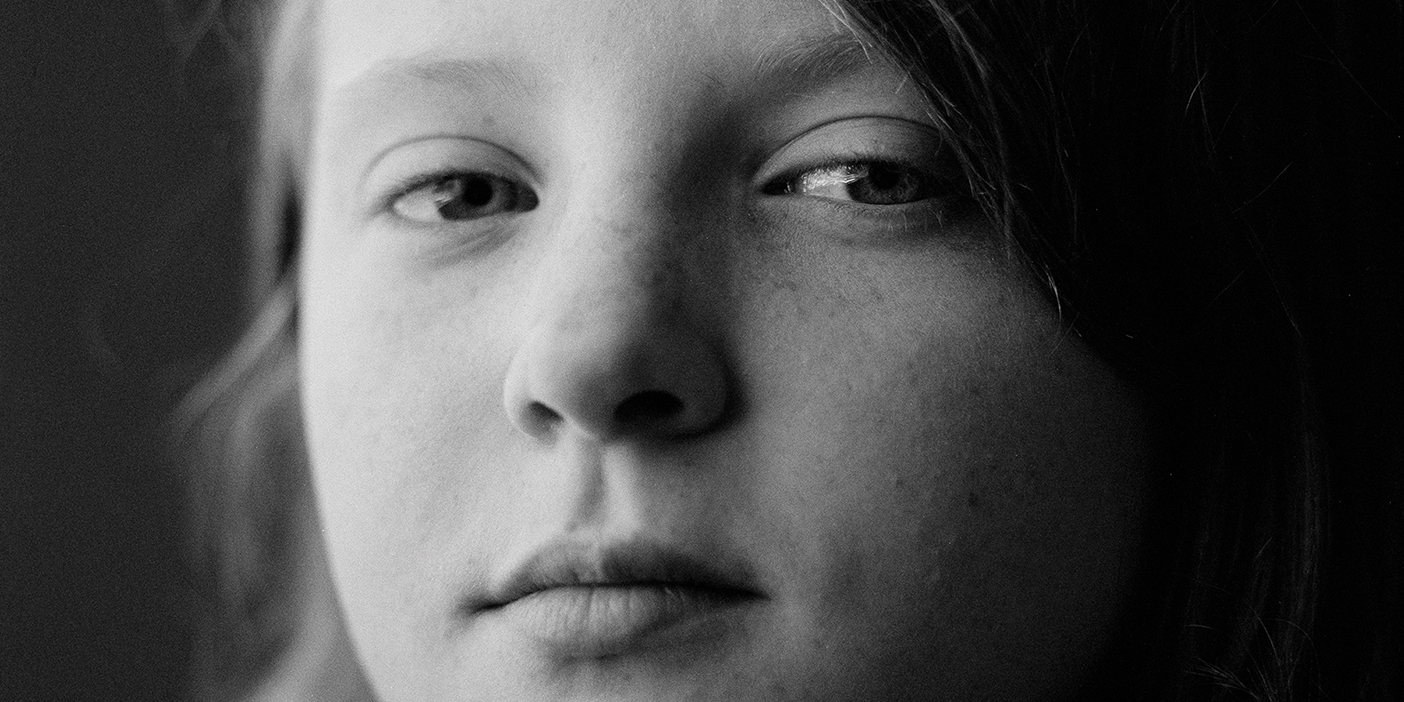Colorful fall leaves reflect life, death, and love.

The Rocky Mountains enjoy a long period of changing color in the trees each year. In Utah, from August to November, the brightest colors descend in glorious gradients, from the mountain tops through the canyons, until chroma envelops the valley floor. Every elevation has its own day of peak color, preceded by subtle signs of change—crisp air, a morning frost, the first fallen leaf. After the peak, leaves carpet the streets, a few laggards staggering on trees as autumn passes into winter. But at the peak, the ochre-, auburn-, and persimmon-colored leaves abound in density and intensity.
On Monday, Oct. 16, 2017, in the midst of peak color for our valley, Ruth and I drove to the doctor’s office with the windows down. We rejoiced in the blue skies, in what Emerson deliciously described as “perfection . . . in that pure October weather.” The visit was our final checkup before Ruth and the medical team would deliver our twin boys two days later.
Pregnancy is its own incredible journey: hearing heartbeats is exhilarating, seeing children in utero during an ultrasound magical. And yet, to the exhausted mother, these confirmations of new life cast off their spell and become utterly routine. With 37 weeks of consistent growth and good health for babies and mother, the checkups became more about the coming relief of delivery.
Sometime around 10:30 a.m., our medical team discovered that the heart of one of our boys had stopped. Since they did not know why it had happened, they were concerned for the health of the other twin.
Hardly pausing to mourn or reflect, we sped to the hospital to save our still-living son. As we arrived, we were matriculated into a sea of forms, processes, and professionals. Then the great machinery of medical care pushed us, shaken and scared, into the operating room where we would deliver.
At 1:39 p.m. our stillborn son was lifted out of Ruth, and at 1:40 p.m. our living son emerged and gasped his first breath. His piercing cry was our first relief of the day. Shortly thereafter, Ruth received her stitches and the wheels of medicine again propelled us forward.
“For me, to find joy in fall leaves is to love transience and change. Our joy in colorful leaves cannot be separated from the fact that they will soon fall.” —Doug Thomas
Amid a torrent of nurses, paperwork, and family, Ruth and I navigated our own currents of emotion: elation at the birth of one son and grief at our loss of another. Finding our feelings was in turn easy, sharpened during the moments of reflection and solitude, and then hard, dulled by the brute force of their magnitude and compounded by medication, exhaustion, and busy-ness.
I sometimes wonder if it is the bright colors of fall that excite us, or if it is rather their short moment to shine that truly entices. For me, to find joy in fall leaves is to love transience and change. Our joy in colorful leaves cannot be
separated from the fact that they will soon fall.
To welcome the miracle of life is also to acknowledge the constant possibility of death. A human lifetime is usually long enough for us to forget, at least for some time, intimations of our own end. And yet, like enjoying autumnal leaves, to love life is also to love the symbols and essence of mortality itself.
By the time Ruth, the baby, and I emerged from the hospital on Friday afternoon, the last chromatic moments on Utah’s mountaintops had faded. The valley’s color too had shifted as dramatically as our outlook had over the previous four days. Our mix of feelings matched the pervasive gray skies and newly bare trees, punctuated by brightness from a few majestic yellow sycamores, red maples, and orange oaks, remnants of the past glory which had kept their leaves still.
As with fall leaves, celebration and condolences are not so different from each other. We may never know the peak day of our own color. The pain of loss is inseparable from the elation we experience; both emanate from the love we feel, even for ones we barely knew.
Doug Thomas is a BYU assistant professor of design.












